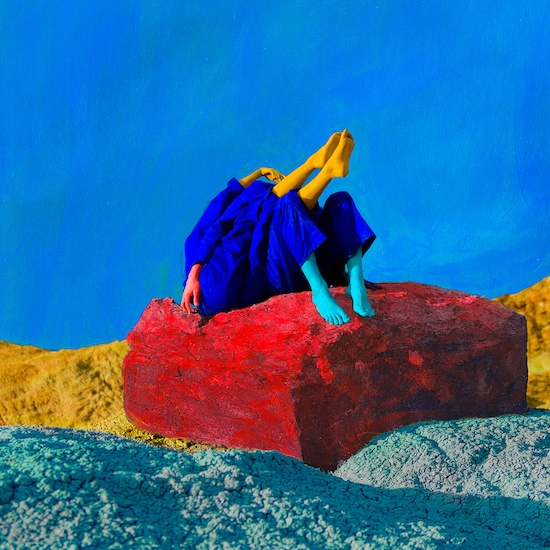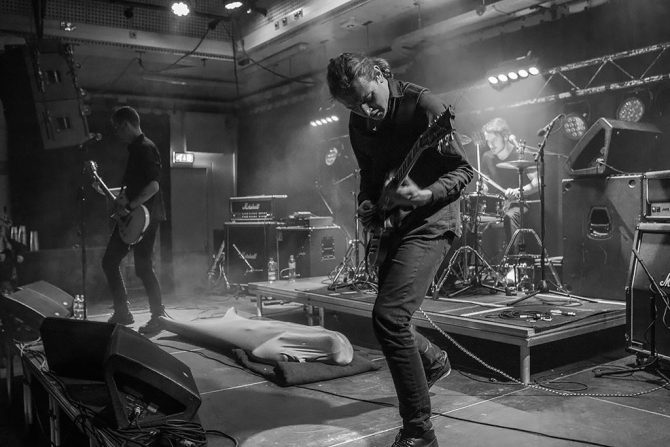
(Andy Synn grabs his net and pith helmet and goes on the hunt for that rarest of specimens, the Avant-Garde Black Metal album, by reviewing the latest record by Grey Aura, which was released on 07 May)
The term Aposematism (coined by Edward Bagnall Poulton in 1890, and originally referred to, more simply, as “warning colouration”) refers to the way in which certain animals, often (though not always) through the use of bright colours and bold patterns, signal to potential predators that they’re toxic, venomous, or otherwise dangerous, and – to coin a phrase – shouldn’t be fucked with.
Why am I telling you this?
Well, for one thing, it’s always nice to learn something new, no?
And, for another, it’s clear that the new album from Avant-Black artistes Grey Aura, operates using a similar principle, because the record’s fantastically strange and visually striking cover is an obvious and eye-catching warning that what you’re about to hear is not going to adhere to the normal rules.

While the Dutch trio are, ostensibly, a Black Metal band at their root – and there’s more than enough blasting fury and writhing discordance underpinning tracks like “Maria Segovia” and “De onnoemelijke…” to put any doubts about the band’s DNA to rest – its more apparent than ever on Zwart Vierkant that their relationship to the genre is a lot more tentative, tenuous, and downright tempestuous, than most, and while black is definitely still one of the most prominent shades in their creative palette, it’s far from the only one.
Whether it’s the lucid stream of dreamlike acoustic notes which crowns the climax of the aforementioned opener, the folkish dervish at the centre of “Het Schuimspoor van de ramp”, or the moody, jazz-laced minimalism of “Parijs is een portaal”, every song – from the most savage to the most sublime – has something uniquely strange and compellingly unorthodox about it, and although the record’s seven songs undeniably fit together to make a greater whole, the way in which they fit together, the pattern that they then form, is anything but predictable.
But, for all their avant-garde aspirations and atmospheric inclinations – which, I might add, go far beyond the usual methods used by many so-called “atmospheric” bands, including as they do the use of actual, on-site recordings to fully bring you “into the scene” in songs like “El Greco in Toledo” and “Parijs…” – the band never lose touch with underlying physicality of their medium, cutting through the overarching aura of post-modern alienation with searing bursts of raw passion and raging fury whose impact and intensity simply cannot, and will not, be denied.
This is, of course, a difficult balancing act to maintain – many have tried, most have failed, crushed beneath the weight of their own ambition – but Grey Aura really do seem to have the magic touch, such that even their more “traditional” numbers (and I use that term loosely, as this record, and the novel upon which it’s based, is all about rejecting tradition and embracing abstraction) find ways to incorporate a multitude of unorthodox touches, whether that be wicked, waltzing rhythms or fiery, flamenco-like trills, which only serve to add more depth and colour to the music, without muddying its definition.
Much of the credit for this must go to the band’s rhythm section – whose fluid, free-flowing bass-lines serve to subtly fill in the gaps in each song without ever stealing focus, and whose clever, creative drum work slips and slides and shifts smoothly from bone-rattling blasts to primal, pulse-raising beats to jazzy, rimshot-heavy rhythms, without ever missing a step – but the truth is that Zwart Vierkant is an album whose success is reliant on all of its contributors being on the same page and sharing the same unique and unwavering vision.
As much a complex conundrum as it is a sheer feast for the senses (closer “Sierlijke schaduwmond” in particular is one of the most intriguing, immersive, and at times breathtakingly intense, tracks I’ve heard all year) this is the sort of album that I might… might… even be tempted to call a “masterpiece”… if I didn’t think that the term had largely been distorted and devalued by over-use over the years.
Suffice it to say, however, that, as long as the cover art’s colourful display hasn’t scared you off, you’re unlikely to experience anything else quite like this one this year.
